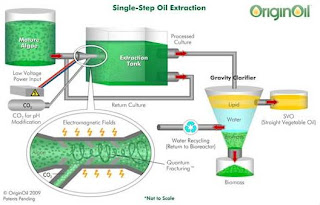More than 100 people showed up for a high-profile workshop this week in Chicago about developing wind energy in the Great Lakes. The event, sponsored by the U.S. Department of Energy and the White House Council on Environmental Quality, drew wind developers and manufacturers, folks from nonprofit organizations and other industry experts as well as representatives from federal, state and local regulatory agencies.
The DOE also this week joined with the National Oceanic and Atmospheric Administration and two other agencies to announce about $5 million in research awards meant to study siting and permitting of offshore wind turbines and ocean energy generated from "waves, tides, currents and thermal gradients."
Also this week, oceanpowermagazine.net reported that federal, state and University of Massachusetts Dartmouth officials have announced plans to develop a 300-square-mile "marine renewable energy technology test bed" just south of Martha’s Vineyard and Nantucket. The site is to be dubbed the the National Ocean Renewable Energy Innovation Zone and will allow companies to test and develop technology that harnesses energy from ocean wind, waves, tides and current.
And earlier this month, the National Renewable Energy Laboratory released a report that said harnessing even a fraction of the nation's potential offshore wind, estimated at more than 4,000 gigawatts, officials said, "could create thousands of jobs and help revitalize America's manufacturing sector, reduce greenhouse gas emissions, diversify U.S. energy supplies, and provide cost-competitive electricity to key coastal regions."
"The nation's oceans represent a major potential source of clean renewable energy, and DOE is committed to developing the innovative technologies that will harness that potential," said U.S. Secretary of Energy Steven Chu, in announcing the money for research projects.
Chu said DOE's partnership with other federal agencies will help streamline development of offshore renewable energy projects, create jobs and enhance national energy security.
Commerce Under Secretary for Oceans and Atmosphere and NOAA Administrator Jane Lubchenco said the grants will help understand offshore renewable energies environmental impacts and how to incorporate "appropriate mitigation measures from the outset."
The awards include:
- $499,000 to Auburn, Wash.-based Parametrix for planning and siting research.
- $499,000 to the Cornell Lab of Ornithology's Bioacoustics Research Program in Ithaca, New York for studies to evaluate how sounds from construction and operation of offshore wind turbines affect surrounding environments.
- $745,000 to the University of Rhode Island for monitoring and study of offshore wind to provide regulatory agencies "with a comprehensive, yet flexible means of assessing the impacts of a broad range of offshore renewable energy resources projects on marine ecosystems."
- $746,000 to the University of Washington's School of Aquatic and Fishery Scientists in Seattle, Wash. for evaluating acoustic technologies to monitor aquatic organisms at renewable sites.
- $499,000 to Pacific Energy Ventures in Portland, Ore. for studies and monitoring of renewable energy in the ocean. The intent is to create a system that can be used anywhere.
- $497,000 to the University of Arkansas Center for Advanced Spatial Technologies in Fayetteville, Ark. to create a system that "will allow a user to design the spatial layout and content of an offshore facility, import and prepare geospatial data that will affect visibility, run a series of sophisticated visual analyses, define atmospheric, lighting and wave conditions and, finally generate one or a series of realistic visualizations from multiple viewpoints."
- $497,000 to the University of Texas at Austin's Bureau of Economic Geology for "carbon sequestration monitoring and risk assessment."
- $748,000 to the University of Massachusetts' Marine Renewable Energy Center in Dartmouth, Mass. to "develop a technology road map for the application of advanced spatial survey technologies, such as buoy-based LIDAR, to the assessment and post-development monitoring of offshore wind and hydrokinetic renewable energy resources and facilities."






















